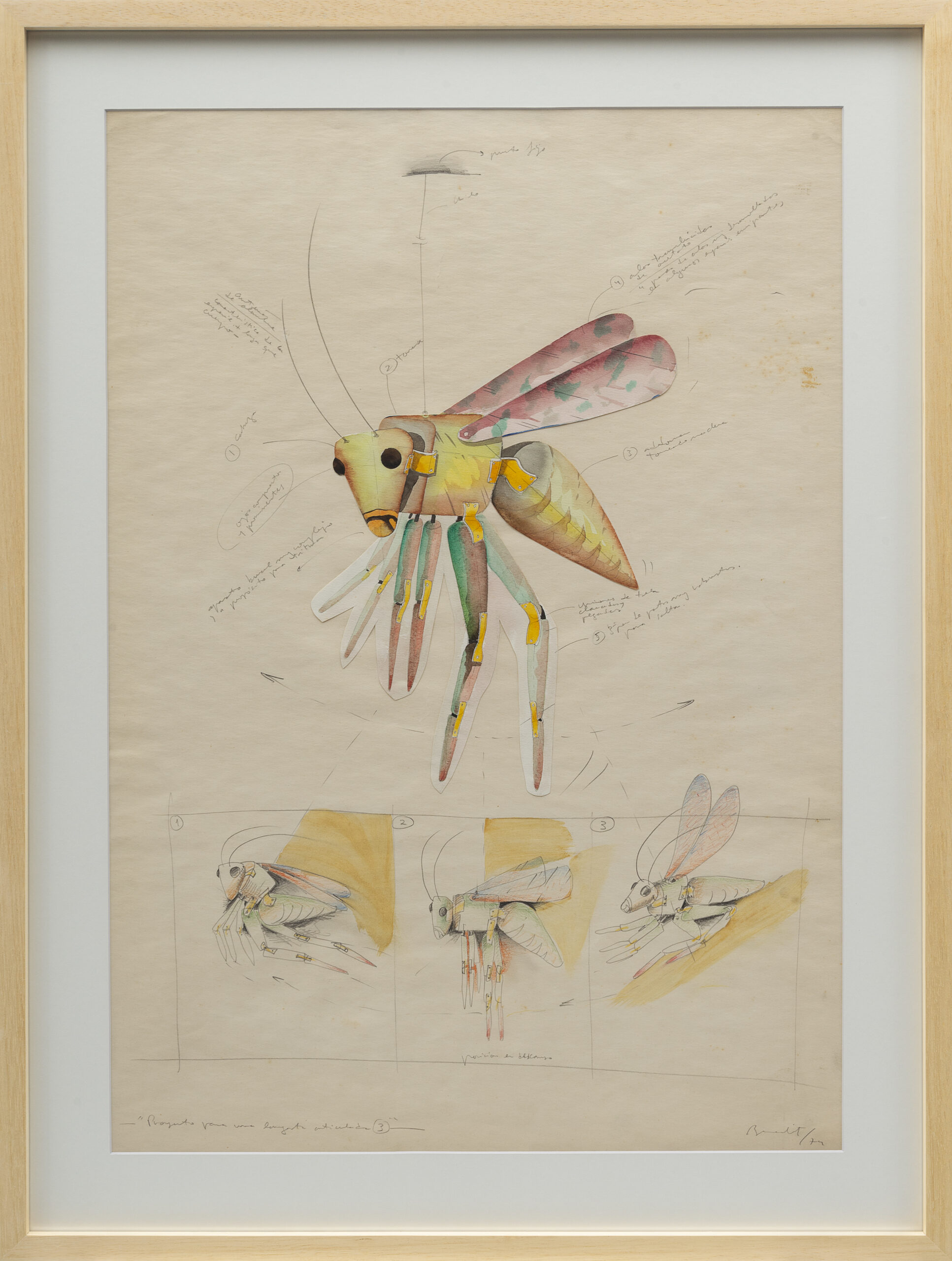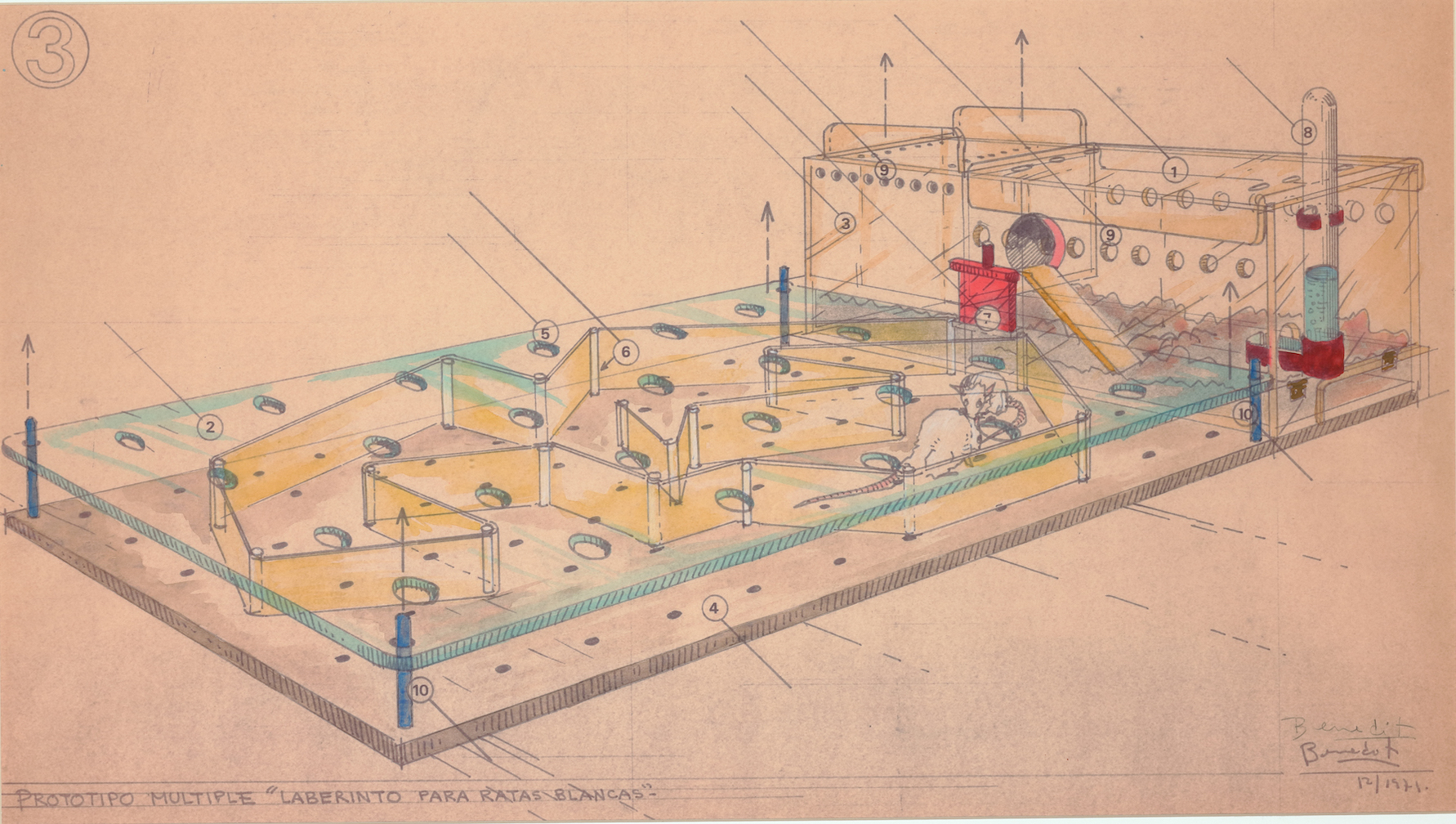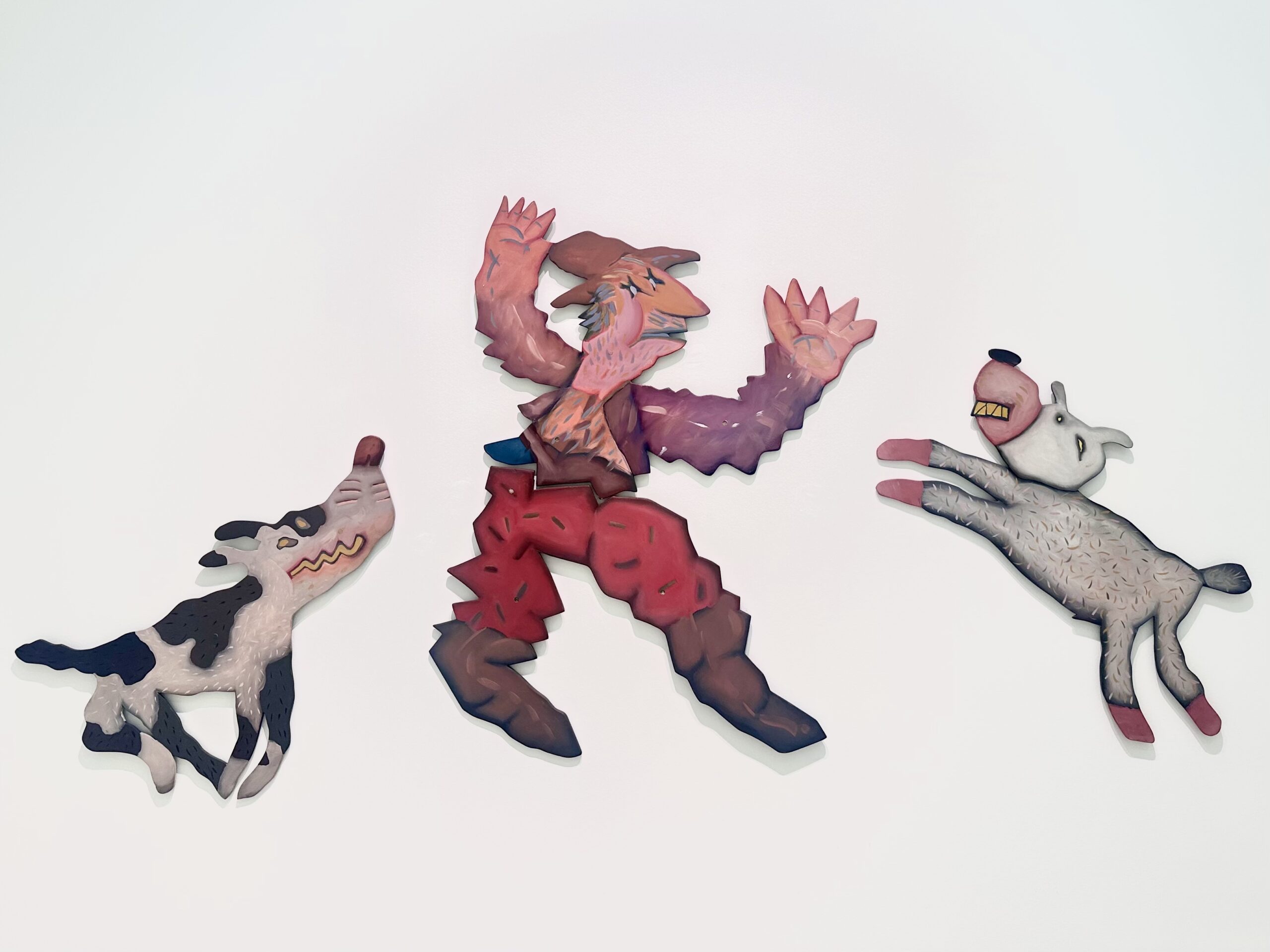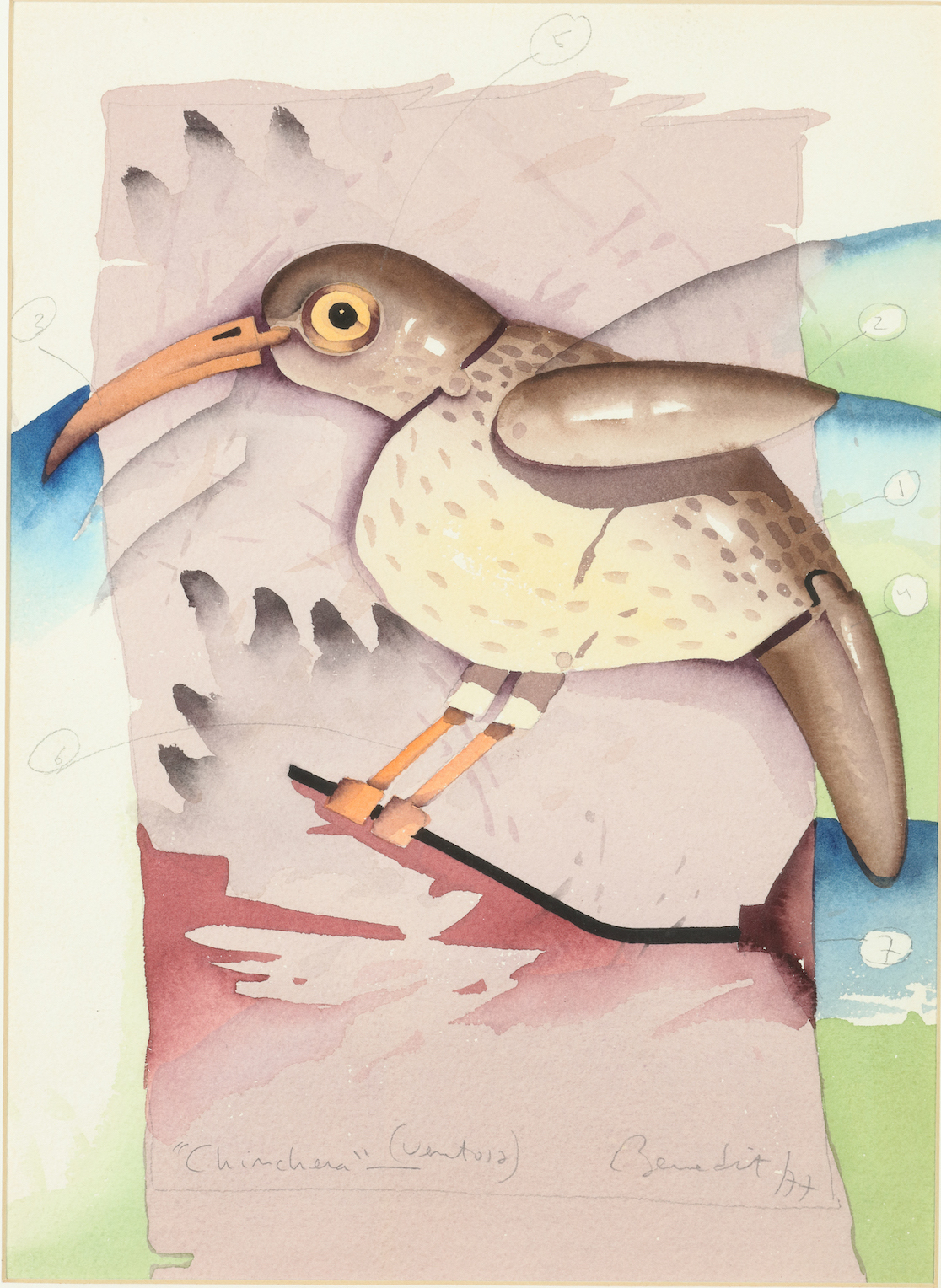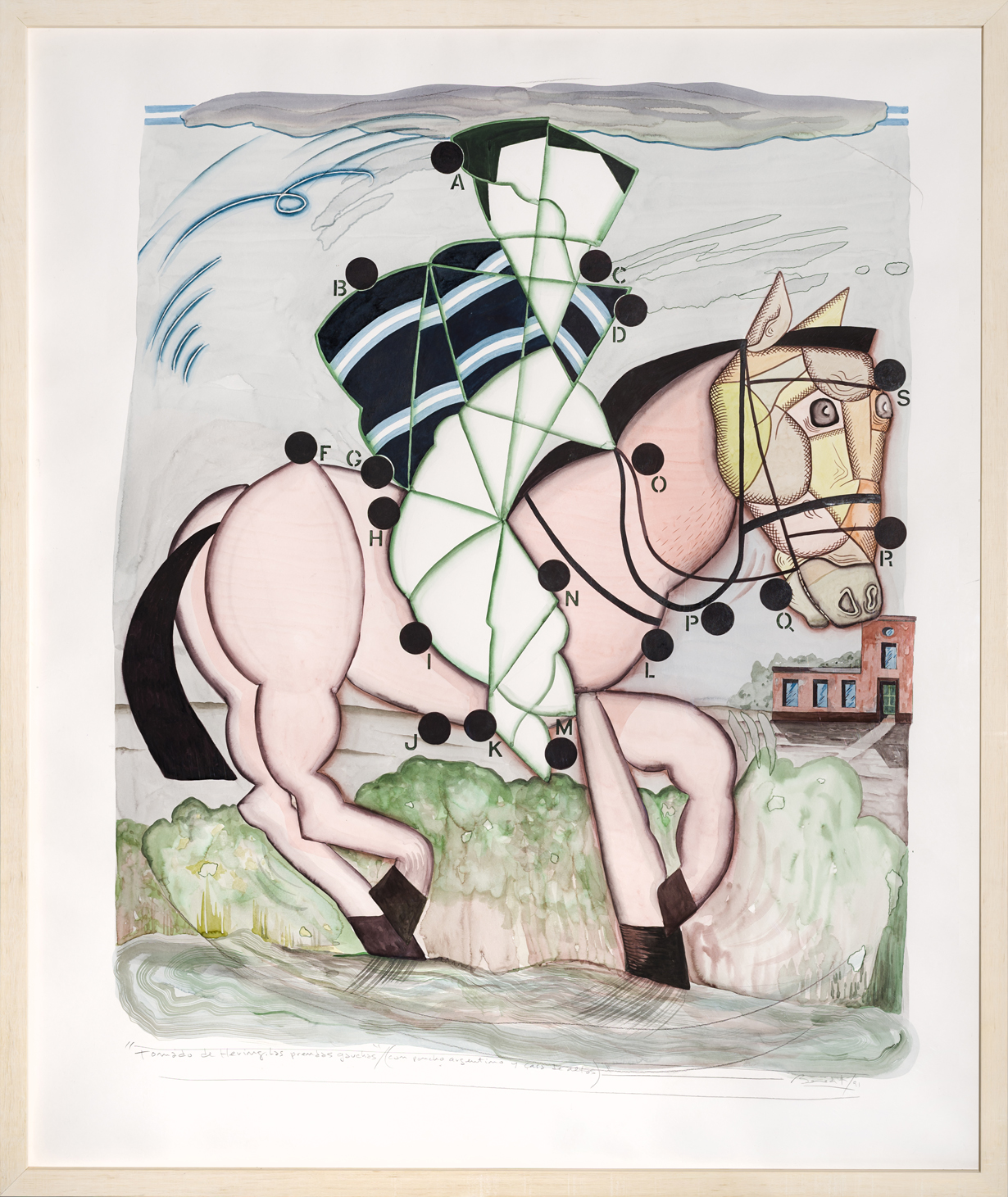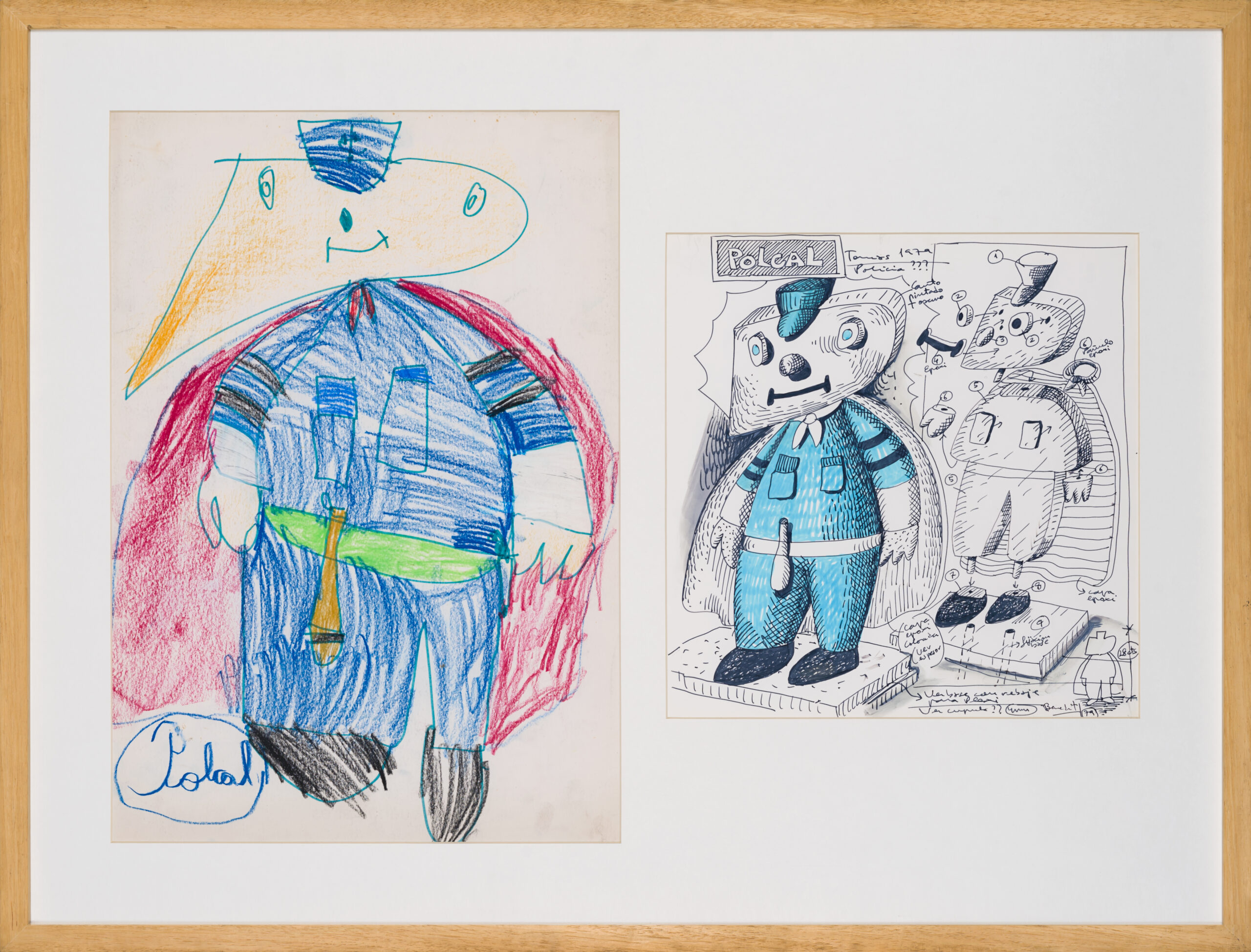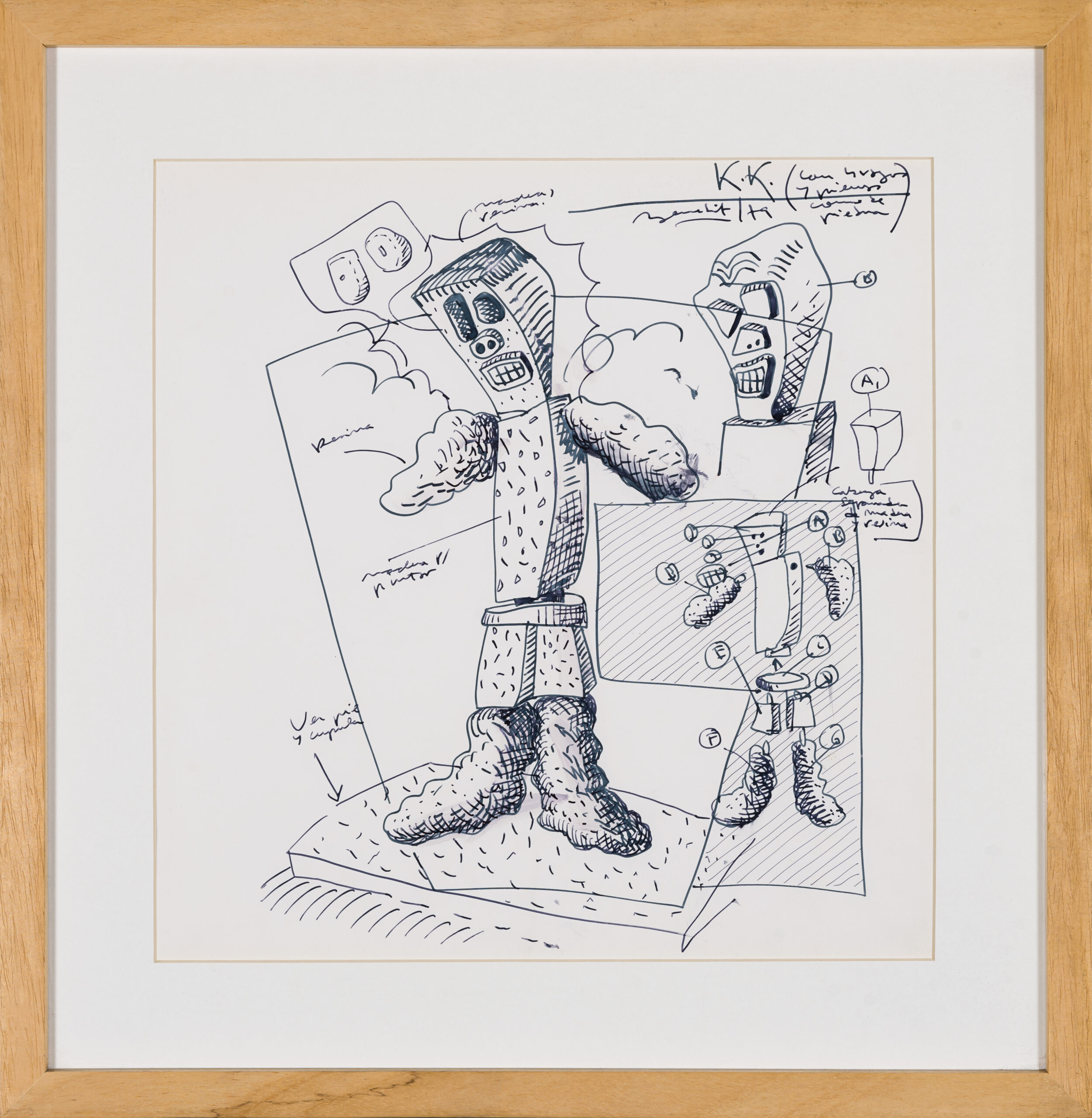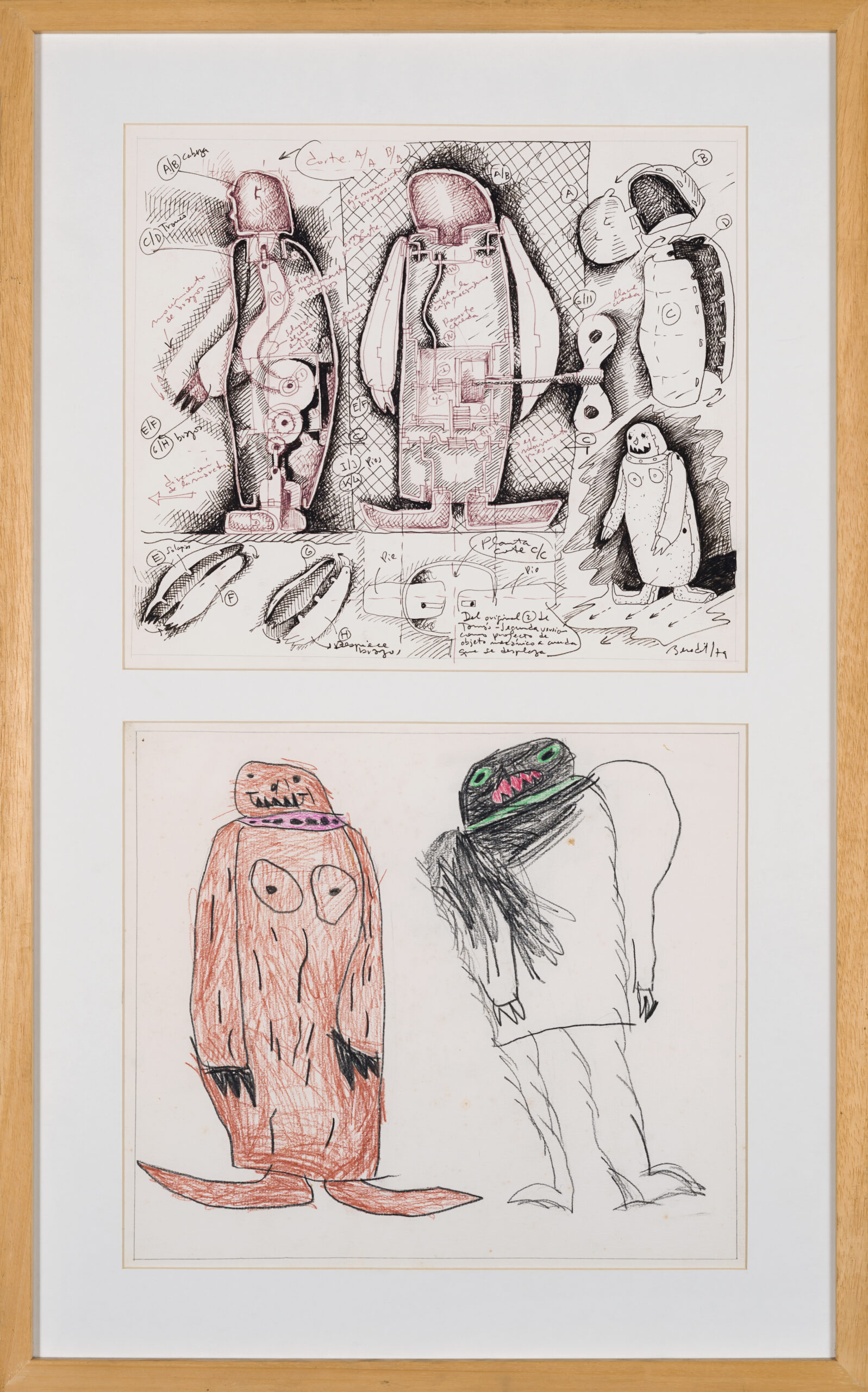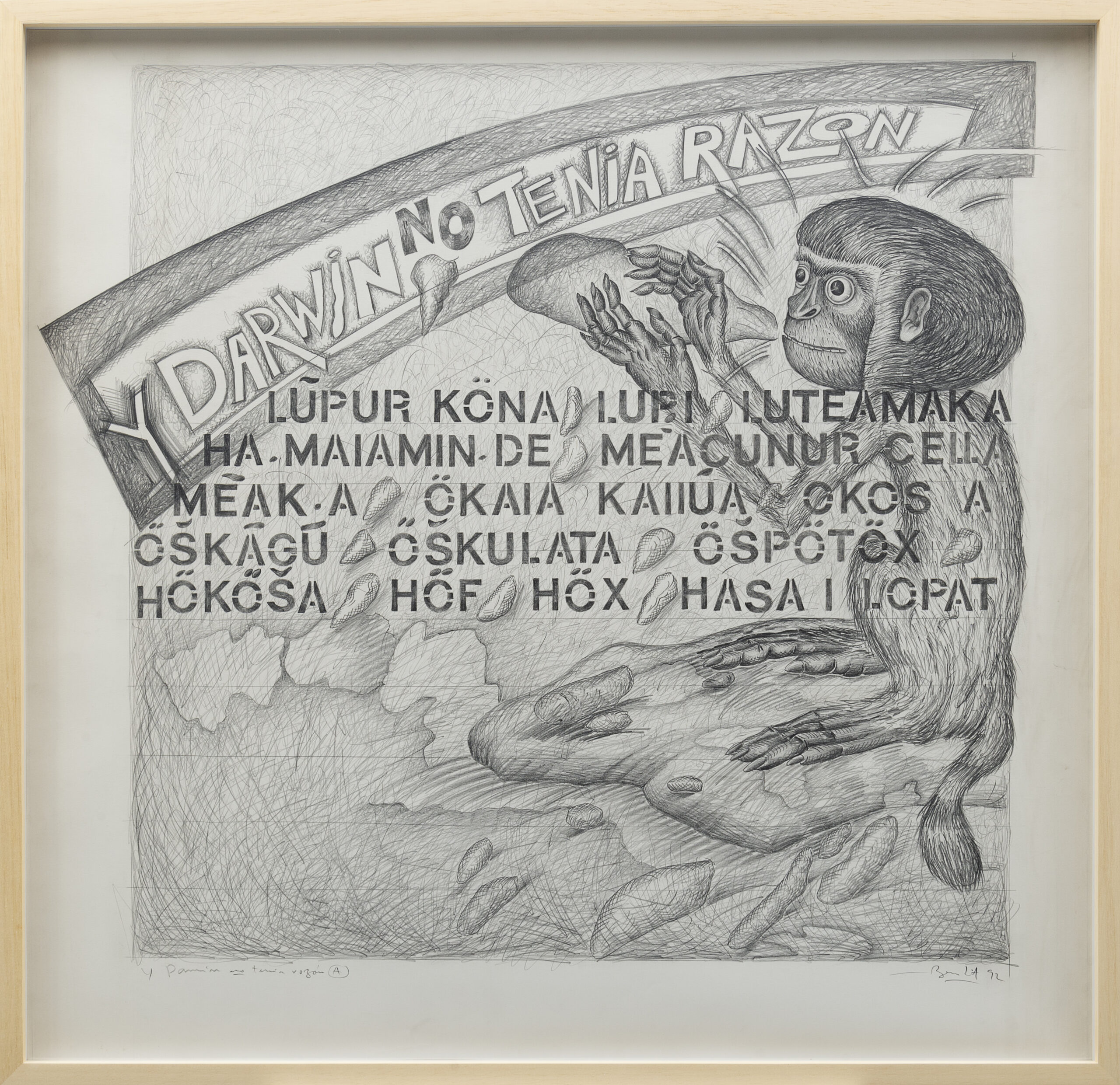Luis Fernando Benedit
Visual artist, architect and designer. His work is part of the main currents of the second half of the 20th century in our country, especially the emergence of conceptual art and its offshoots. His main themes are, firstly, the link between art and science, which allows him an anthropological investigation centred on the analysis of behaviour conditioned by the environment; then, the work on the paradigms of the construction of nationality and the quotations both from local plastic production and from the journeys of the naturalists who explored Patagonia.since childhood he has been inclined towards drawing, design and caricature. He entered the Faculty of Architecture at the University of Buenos Aires in 1956. He graduated in 1963 with an award-winning project. At the same time he began his career as a painter. His first exhibitions place him in the transition from an initial informalism towards a neo-figuration with images not exempt from critical humour: El candidato, Prócer federal, among others in his exhibition Nuevos rostros, presented in 1961 at the Galería Lirolay. There he experimented with the combination of oil and enamel.
In 1963 he moved to Madrid, where he continued to work both in architecture and painting. The latter changes towards an expression close to pop, made up of synthetic forms and flat tones. In 1966 he exhibited at the Galería Europe. He returns to the country and creates, together with Vicente Marotta, the setting Barba Azul, for the Museo de Arte Moderno in Buenos Aires, combining volumetric enamels on sheet metal and sound settings, with Marotta’s sculptures in enamelled cement. After exhibiting at the Rubbers Gallery in 1967, he moved with his family to Rome, where he received a scholarship to study landscape architecture. He also produces painted acrylic objects. His interests extend to biology and the possibility of incorporating living organisms into his works.
He returns to Buenos Aires in 1968, where he continues his work as an architect and plastic artist. He presents in the exhibition Materiales. Nuevas técnicas. Nuevas expresiones, at the Museo Nacional de Bellas Artes, his first artificial habitat. This was followed by the exhibition Microzoo, at the Rubbers Gallery, where he exhibited various habitats for plants, animals and insects – bees, fish, turtles, ants, cats. The interest in these works is the analysis of behaviours and their external, artificial and cultural conditioning: the opposition between nature and culture; the gesture, the demarcation of the artistic territory, and the appropriation of materials and techniques from biology, with a discourse that transgresses the purity of the postulates of the experimental sciences, to become sociological and philosophical.
In 1969 he took part in the exhibition Arte y cibernética, organised and curated by Jorge Glusberg to exhibit computer designs – his work with this critic and curator would continue over the years. In 1970, at the Venice Biennale, he presented one of his best-known habitats: the Biotron, with the collaboration of the scientists Antonio Battro and José Núñez, and Glusberg himself.
In 1971 he took part in the exhibition Arte de sistemas, a prelude to the conceptualist deployment of a group that was about to be formed: the Grupo de los 13, led by Glusberg at the CAYC. He was part of this group from the first exhibition, Hacia un perfil del arte latinoamericano, in 1972, to the last, Grupo CAYC in Santiago de Chile, in 1994, and in Arte de sistemas (1971) he exhibited his Laberinto invisible (Invisible Labyrinth), in which the spectator circulates along a route regulated by a set of mirrors, sensors and sound alarms. In 1972 he was invited to hold a solo exhibition at the Museum of Modern Art in New York. There he presented the Phytotron, a hydroponic cultivation system whose designs were acquired by the museum. In the same year he began a series of pencil and watercolour drawings imitating the studies of naturalists: views of insects and other species, with notes and analytical references.
In 1977 he took part in the collective submission of the Group of 13 to the São Paulo Biennial, where the group won the Itamaraty Grand Prize, not without controversy, and around this time he began to produce a new series of conceptual works based on the drawings of one of his sons, Tomás, who was only five years old. The works consist of three elements: the child’s drawing, its reworking as a design and its concretion in a volumetric object. This series was exhibited in Los Angeles, New York and Tokyo at the beginning of the 1980s, and from 1978 onwards he took on, in a critical spirit, themes linked to the construction of national identity. In the first place, the countryside – the bastion of Argentina’s agro-livestock industry – and its prototypes: gauchos, ranches, and also tools such as the castration tongs and the designs for cattle brands.
In 1979, together with Clorindo Testa and Jacques Bedel, he won the competition for the recycling of the Centro Cultural Recoleta building. In 1983 he designed the Ruth Benzacar Gallery building, and in 1990, the Munar Foundation, dedicated to design. Between 1984 and 1986, his research into nationality added themes related to pictorial production: quotations and reworkings of works by Jean-Léon Pallière and travelling painters. Towards the end of the decade, he developed his interest in Patagonia and, in particular, in the expeditions of naturalists such as Fitz Roy and Darwin, in Del viaje del Beagle (On the Voyage of the Beagle). The works, composed of drawings and objects, simulate the exhibits of a natural science museum.
Tomado de Hering. Las prendas gauchas. Caballo del 1 al 12 / Jinete del A al G, 1991
acuarela sobre papel, 132 x 104,5 cm.
Tomás B. (Cabeza de mujer con rostro amarillo), 1979
tinta y lápiz de color sobre papel, 70 x 45 cm.
